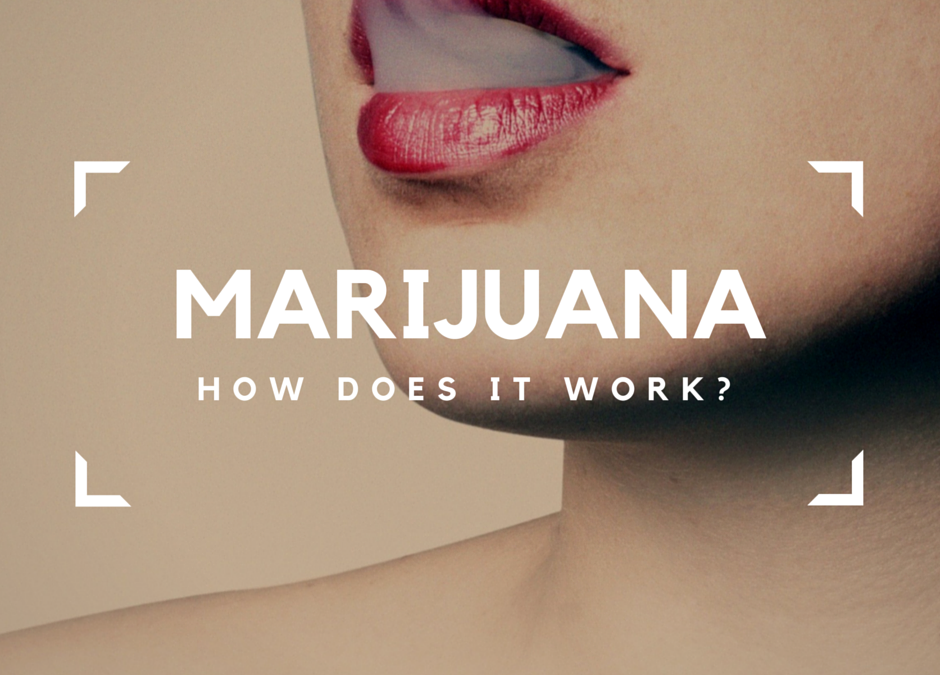We are all familiar with the concept and affects of being high. But what many people don’t know is why we feel that way. How does marijuana make you feel high? What is the science behind feeling this way? And does medical marijuana work the same way? Here, we explain, simply how marijuana affects our brain, and our body. So, how does marijuana work?
In order to understand how marijuana affects the brain, we must first understand how it relates to our bodies and our brains.
What’s the Endocannabinoid System (ECS)?
This is what you might of heard as the body’s own cannabinoid system. It is a group of cannabinoid receptors (most of which are located in the brain) and throughout the rest of the central nervous system and the peripheral nervous system.
What does it do? It plays a role in the regulation of things like: mood, memory, the sensation of pain, physiology, and appetite. While it performs many tasks, its main goal is to provide your body with homeostasis and an overall healthy and stable environment.
There are two primary cannabinoid receptors: CB1 and CB2.
What’s the Difference Between CB1 and CB2 Receptors?
CB1 receptors are predominantly found in the brain and nervous system (and occasionally found in other organs and connective tissues). The CB1 is the main receptor for THC. The psychoactive effects of cannabis are a result of THC activating CB1 receptors.
CB2 receptors are primarily found in the immune system and its affiliated structures. They take on the responsibility of modulating the anti-inflammatory effects of cannabis. Essentially CB2 acts as an immune response – which could be very important in medical marijuana, as inflammation is a significant factor in many diseases.
What Are Cannabinoids?
Cannabinoids are chemical compounds that interact with the brains’ receptors. There are at least 85 cannabinoids that can be found in cannabis. Because of the hype of cannabis and marijuana legalization, the cannabinoids that most people are familiar with are THC and CBD.
What is CBD?
Unlike THC, CBD does not have psychoactive effects. It is THC’s non-psychoactive cannabinoid sibling that does not seem to bind to CB1 or CB2. So how does it work?
Instead, CBD seems to indirectly stimulate cannabinoid signaling by suppressing the enzyme that breaks down THC’s “twin,” called anandamide – thus explaining why CBD can counteract some of the effects of THC.
But like THC, it also seems to play a role in appetite, the immune system, and especially pain management.
What is THC?
THC is the cannabinoid that is responsible for the psychoactive effects of marijuana. It affects the brain by activating the brain’s cannabinoid receptors (primarily CB1). Because it affects the brain, it can promote creativity, can amplify your thoughts and can even help you focus.
THC in the Body
THC is a phytocannabinoid (phyto means “of the plant”) that activates the CB1 receptor, resulting in a psychoactive effect. The “twin” of THC that is found in our bodies is called anandamide – which is one of our body’s naturally occurring cannabinoids. THC essentially mirrors this cannabinoid.
THC Dosage is Important
Cannabinoids, and THC in particular, has a biphasic effect – this means that low and high doses can have opposite effects in users. Thus, this explains why many people feel relaxed when taking low doses of cannabis and paranoid under such high doses. Furthermore, the effects of cannabis are highly dependent on the individual and the method of preparation (eg. Edibles, vaping etc.).
This also depends on an individual’s lifestyle preferences. Some may want to feel drowsy and relaxed, while others may prefer to feel energetic and happy.
Another aspect that will affect the effects of cannabis are the THC to CBD ratios – which vary dramatically from strain to strain.
OPTIMAL Doses (Low to Moderate) and the Effects:
Elevated mood, euphoria
Relaxation
Sleepiness (although, higher CBD concentrations can counteract this effect)
Increased levels of energy
Increased creativity
Blocked detection of pain
Appetite stimulation
High Doses and the Effects:
Hallucinations (varies from mild to moderate)
Paranoia
Anxiety
Disorientation
Heightened pain sensitivity


Recent Comments